Characteristics of LSSE 2014 respondents
Figure 1: Gender
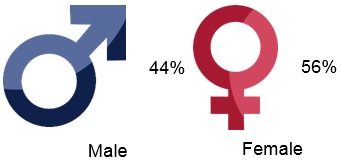 |
Figure 2: Race/Ethnicity 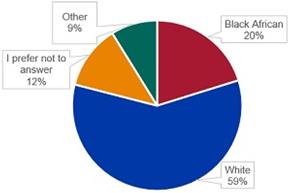
| Figure 3: Employment Status 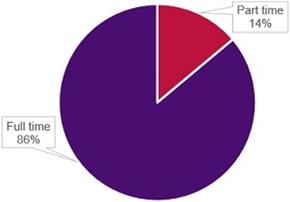
|
Figure 4: Academic Rank 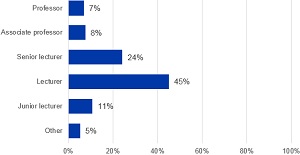
| Figure 5: Academic Discipline 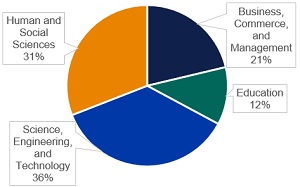
|
Lecturers' time: Teaching, research, advising, and service
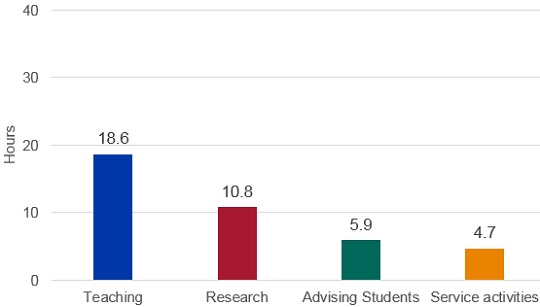
Figure 6: Lecturers' average hours spent per week on Teaching and Learning activities
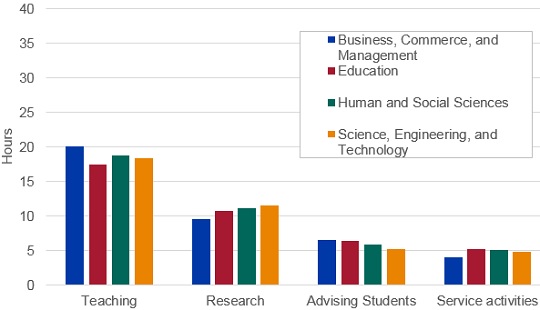
Figure 7: Lecturers' average hours spent per week by discipline
Figure 6 shows the estimated average hours lecturers spend on research, teaching, and other activities in a typical 7-day week. The average lecturer spends most of their time on teaching-related activities (time in class, grading, etc.), less time on research and advising students and the least amount of time on service activities. Figure 7 shows how this time is spent differently in various disciplinary areas:
- Across all disciplinary areas, lecturers devote the majority of their time to teaching-related activities. Lecturers in Education spend the least time teaching compared to that of the other disciplinary areas.
- Lecturers in Science, Engineering, and Technology spend the most time on research per week, while lecturers in Business, Commerce, and Management spend the least amount of time on research.
- Lecturers in Business, Commerce, and Management report the largest time spent on advising students. However, lecturers in all of the disciplinary areas, on average, spend approximately six hours on advising students, and the overall difference across disciplinary areas is very small (just more than one hour).
- Only lecturers in Education spend more than five hours per week on service activities, while lecturers in Business, Commerce and Management, Human and Social Sciences and Science, Engineering and Technology spend five hours or less per week on service activities.
Lecturers' time: Teaching-related activities
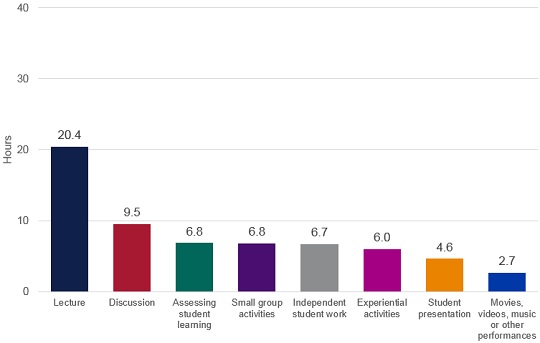
Figure 8: Estimated average class time spent on teaching-related activities
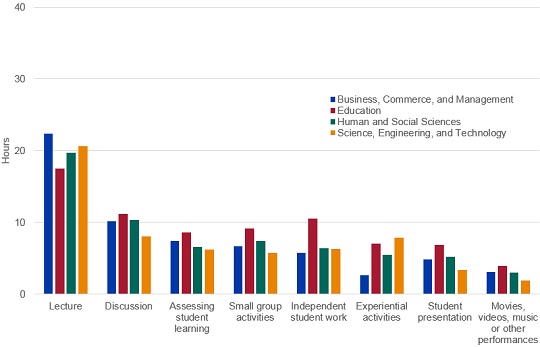
Figure 9: Estimated average class time spent on teaching-related activities by discipline
Figure 8 shows the estimated average number of hours lecturers devote to different teaching-related practices. On average, lecturers spend most of their class time on lectures, followed by discussions, student learning assessment, small group activities, independent student work, and experiential activities.
Examples of the discipline differences observed can be seen in Figure 9 and include:
- Across all disciplinary areas, lecturers tend to spend the majority of their class time on lecturing. Lecturers in Business, Commerce, and Management spend more than 22 hours per week on lecturing while lecturers in all other disciplinary areas spend less than this.
- In all other teaching-related activities except lecturing, lecturers from Education spend more hours than lecturers in all other disciplinary areas.
- On average, lecturers in Education allocate the most hours of class time on independent student work (10 hours) while lecturers in all of the disciplinary areas, on average, spend 6 hours or less on independent student work.
- On average, lecturers in Business, Commerce, and Management allocate the least amount of time to experiential activities (3 hours).
- Lecturers across all disciplinary areas allocate 10 hours of their class time on discussions, on average.
- On average, lecturers in Science, Engineering, and Technology allocate the least amount of time to student presentations (3 hours) while lecturers in Education spend the most amount of time (7 hours) on student presentation.
What we have learnt
Areas of overlap between lecturers and students
The majority of students (76%) report that they often or very often use learning strategies in their academic work with the majority of lecturers (73%) saying that they substantially encourage students to use these learning strategies. This finding shows that when lecturers emphasise or regard activities as important, students are likely to engage in such activities. Other examples of this are students participating in student societies, campus initiatives that develop their international perspectives, and research with a lecturer (Figure 10). In all of these cases the amount of lecturers who view the practices as important for undergraduate students is reflected in the amount of students who report on either doing it or planning to do it before they graduate.
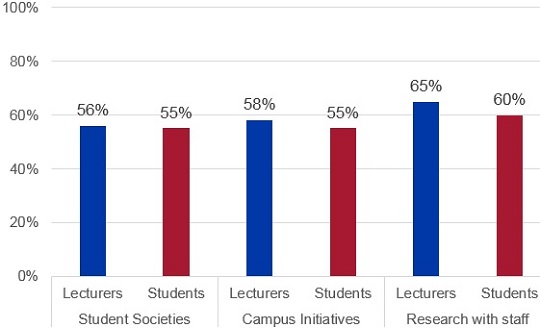
Figure 10: Lecturers' importance vs. students' current or planned participation
The majority of lecturers (79%) also report structuring their modules/subjects in such a way that students learn to think critically and analytically, solve complex real-world problems and develop job-related skills. For these areas, the majority of students (78%) also report that their experience at their institutions contributed substantially to their development of these skills.
Just over half of lecturers (57%) think it is important for students to prepare two or more drafts of an assignment before turning it in, with the same amount of students (57%) responding that they do this often or very often. Therefore, without lecturers placing a high importance rating on a specific activity, not many students will participate in such an activity.
Lecturers were also asked to report on how they think students spend their time (Figure 11). For most of the activities that students spend their time on, such as participating in university activities, working, doing community work, caring for dependents and travelling to class, lecturers and students report similar amounts of time being spent by the students.
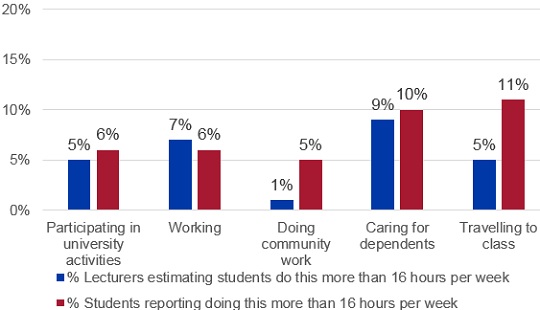
Figure 11: Time spent
Areas of discrepancy between lecturers and students
There were some discrepancies in the perceptions of lecturers and the behaviour reported by students. For instance, 97% of lecturers say that it is important or very important to them that students ask questions or contribute to module/subject discussions and combine ideas from different modules/subjects when completing their assignments. In contrast, 49% of students reported frequently asking questions in class or contributing to class discussions and combining ideas from different modules/subjects when completing their assignments. Even though almost all lecturers (89%) report that they provide detailed feedback to their students shortly after they completed tests or assignments, only two-thirds of students experience this satisfactorily. More than 90% of students report that their modules/subjects require them to do their best work. However, only half of lecturers report that students put forth their best work (very much or quite a bit). Lecturers think that students spend more than 16 hours per week relaxing and socialising. However, when the same question is asked to students, less than 20% of them report relaxing and socialising for so many hours during a week. The majority of students (75%) feel that their institution emphasises providing support to help them succeed academically, but almost all lecturers think that this kind of support should still increase.